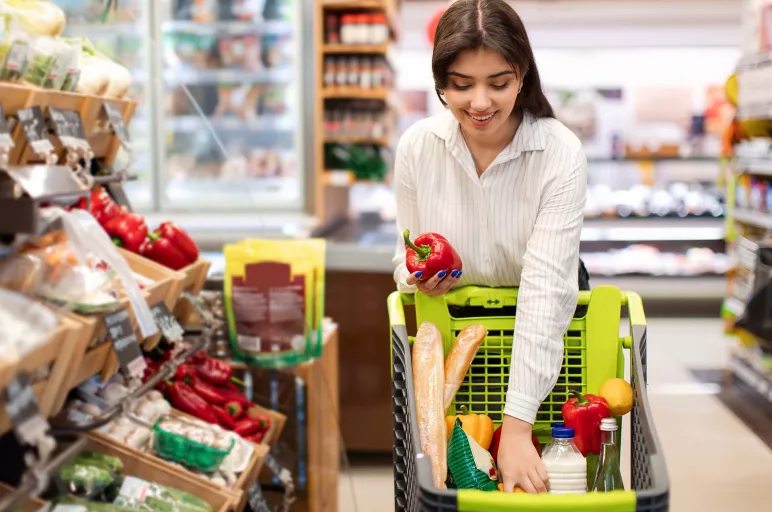
From Factory to Front Door: How CPG Companies Can Achieve Zero-Waste Supply Chain
- CPG companies and their supply chains produce some of the largest waste in the industry.
- They can achieve zero-waste supply chains by adopting sustainable practices like repackaging and a cradle-to-cradle approach.
- They can also leverage digital supply chain solutions for demand forecasting, real-time tracking and enhanced visibility and control.
May 28, 2024 | Supply Chain 3 minutes read
Which stage in the product life cycle produces maximum waste? Is it during consumption by end-users? Or is it during its production cycle?
Surprisingly, a lot of waste is produced even before a product can reach the shelf.
For far too long, the narrative around product waste has centered around consumer behavior, but recent research shows that as much as 40 percent of all product waste occurs in the journey from raw materials to the consumer – i.e., within the supply chains.
Moreover, Consumer Packaged Goods (CPG) companies are the prime culprits in waste production, which is not only damaging the environment but also hurting their bottom line. Spoiled food, improperly managed non-perishables, and inefficient logistics contribute to air, land, and water pollution, as well as the degradation of biodiversity. This ultimately leads to the depletion of valuable natural resources.
How can CPG companies produce less waste in supply chains?
To begin with, they must entrust this responsibility to procurement and supply chain professionals who can play a critical role in driving the transition toward zero-waste supply chains.
Is a Zero-Waste Supply Chain Even Possible?
The roadmap to zero-waste supply chains involves close scrutiny at each stage in the product life cycle. But first, is a zero-waste supply chain even a feasible reality?
The answer is, yes.
How do we know this for certain? Because it has already been done.
As per a Supply Chain 247 report, Achieving Zero Waste Across the Value Chain , Unilever has unlocked a new industry-leading achievement of sending zero non-hazardous waste to landfill across more than 600 sites in 70 countries including factories, warehouses and distribution centers. More than 240 Unilever factories have achieved zero waste to landfill status.
How has Unilever succeeded in this effort? And how can other businesses across different industries follow suit?
The successful transition to a zero-waste supply chain necessitates shifting focus to re-packaging, sourcing strategies, supplier/manufacturer compliance (production in general) and a cradle-to-cradle approach to supply chains.
Here are some ways to optimize supply chains across different stages to achieving near zero-waste.
Optimizing for Zero-Waste Supply Chains: From Farm to Shelf
Sourcing:
Fruits, vegetables and dairy perishables are particularly vulnerable to spoilage, therefore minimizing delays and ensuring timely handovers between multiple stakeholders is critical. While investing in cold storage facilities is essential to preserve freshness, you must also leverage digital supply chain solutions that can help with demand forecasting , real-time tracking and information-sharing for improved visibility and control.
Warehousing:
Proper storage conditions are paramount for extending the shelf life of all products. For fresh and chilled foods, an unbroken cold chain is critical. Robust inventory management systems can provide real-time visibility across the supply chain and further minimize waste due to overstocking or expired goods.
Distribution:
Products that show up too early indicate a lack of market intelligence; products that arrive too late signal a lack of visibility or agility (assuming the products don’t spoil first). Fifth-party logistics (5PL) services can be used to help coordinate activities across providers, optimizing delivery schedules and minimizing waste.
Additionally, embedding zero-waste practices requires understanding the 4 Rs.
Also Read: Your Guide to Supply Chain Decarbonization
The Four Rs: A Roadmap to Success
Reduce:
Minimize waste generation at all stages. Reduce packaging, processing steps and promote efficient materials handling, precise inventory tracking and demand forecasting.
Reuse:
Reuse materials and products wherever possible, this could be through refillable packaging models or product buy-back schemes.
Recycle:
Develop widely available and durable recycling programs for materials that cannot be reused. Collaborate with responsible recyclers.
Recover:
Explore avenues for composting organic waste or converting it into bioenergy.
To Sum Up
The move toward zero-waste supply chains requires close collaboration with procurement and supply chain leaders who can partner with manufacturers, suppliers and retailers to reduce waste in the product life cycle. It also necessitates the adoption of supply chain technology and a circular approach to become more sustainable, while also benefiting the planet.



